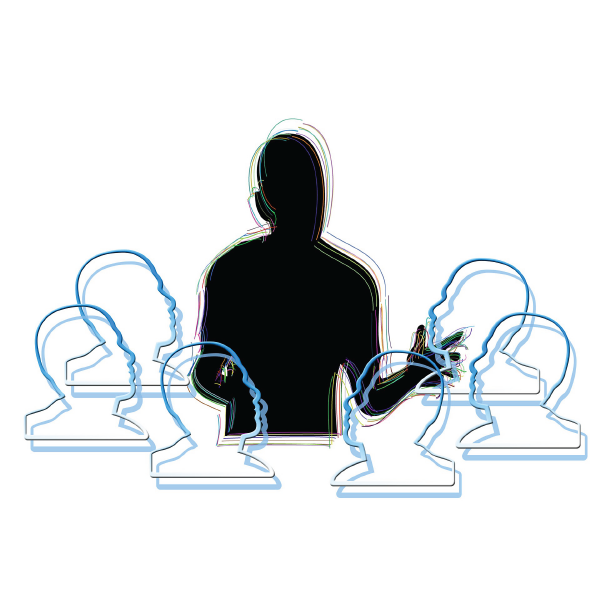Theory of Mind, Empathy, Mindblindness Summary: Theory of mind refers to the ability to perceive the unique perspective of others and its influence on their behavior – that is, other people have unique thoughts, plans, and points of view that are different than yours. Originators and key contributors: Jean Piaget (1896- 1980), a Swiss psychologist, […]
Cognitivism
The cognitivist paradigm essentially argues that the “black box” of the mind should be opened and understood. The learner is viewed as an information processor (like a computer). Contents Contributors Key Concepts Resources and References Contributors Marriner David Merill (1937 – ) Charles Reigeluth (1946 – ) Robert Mills Gagné (1916 – 2002) Jerome Bruner […]
Functional Context Theory (Sticht)
Summary: Functional Context Theory is a cognitive learning theory that was developed specifically for educating adults in businesses and the military. Originator: Thomas Sticht Keywords: Job task analysis, knowledge base, literacy, learning strategies, instructional strategies Functional Context Theory (Sticht) There are various styles of learning requiring educators to learn about their students so that they […]
Gestalt Theory (von Ehrenfels)
Summary: The Gestalt theory of learning originated in Germany, being put forth by three German theorists who were inspired by the works and ideas of the man who gave the learning theory its name. Graf Christian von Ehrenfels was a learning theorist who took the holistic approach to learning by putting forth the idea that learning takes place as students were able to comprehend a concept in its entirety, rather than broken up into parts.
Key Terms: holistic, mechanical response, phenomenology, Isomorphism, factor of closure, factor of proximity, trace factor, factor of similarity, figure ground effect
Theorists: Graf Christian von Ehrenfels, Wertheimer, Kohler, Koffka, insight learning
Gestalt Theory
The term “Gestalt,” comes from a German word that roughly means pattern or form. The main tenet of the Gestalt theory is that the whole is greater than the sum of its parts; learning is more than just invoking mechanical responses from learners.
As with other learning theories, the Gestalt theory has laws of organization by which it must function. These organizational laws already exist in the make-up of the human mind and how perceptions are structured. Gestalt theorists propose that the experiences and perceptions of learners have a significant impact on the way that they learn.
One aspect of Gestalt is phenomenology, which is the study of how people organize learning by looking at
Flow (Csíkszentmihályi)
Summary: Flow is an optimal psychological state that people experience when engaged in an activity that is both appropriately challenging to one’s skill level, often resulting in immersion and concentrated focus on a task. This can result in deep learning and high levels of personal and work satisfaction. Originators & proponents: Mihály Csíkszentmihályi[1][2] Keywords: anxiety/stress, […]
Cognitive Load Theory of Multimedia Learning (Sweller)
Summary: A theory that focuses the load on working memory during instruction. Originators and proponents: John Sweller (1946-) Keywords: cognitive load theory, working memory, multimedia learning
Cognitive Apprenticeship (Collins et al.)
Summary: Cognitive Apprenticeship is a theory that attempts to bring tacit processes out in the open. It assumes that people learn from one another, through observation, imitation and modeling.
Originator: Collins, Brown and Newman
Key Terms: Modeling, coaching, scaffolding, articulation, reflection
Cognitive Apprenticeship
Around 1987, Collins, Brown, and Newman developed six teaching methods — modeling, coaching, scaffolding, articulation, reflection and exploration. These methods enable students to cognitive and metacognitive strategies for “using, managing, and discovering knowledge”
Modeling
Experts (usually teachers or mentors) demonstrate a task explicitly. New students or novices build a conceptual model of the task at hand. For example, a math teacher might write out explicit steps and work through a problem aloud, demonstrating her heuristics and procedural knowledge.
Attribution Theory (Weiner)
Summary: Attribution Theory attempts to explain the world and to determine the cause of an event or behavior (e.g. why people do what they do).
Originator: Bernard Weiner (1935- )
Key terms: Attribution, locus of control, stability, controllability
Attribution Theory (Weiner)
Weiner developed a theoretical framework that has become very influential in social psychology today. Attribution theory assumes that people try to determine why people do what they do, that is, interpret causes to an event or behavior. A three-stage process underlies an attribution:
behavior must be observed/perceived
behavior must be determined to be intentional
behavior attributed to internal or external causes
Weiner’s attribution theory is mainly about achievement. According to him, the most important factors affecting attributions are ability, effort, task difficulty, and luck. Attributions are classified along three causal dimensions:
locus of control (two poles: internal vs. external)
stability (do causes change over time or not?)
controllability (causes one can control such as skills vs. causes one cannot control such as luck, others’ actions, etc.)
When one succeeds, one attributes successes internally (“my own skill”). When a rival succeeds, one tends to credit external (e.g. luck). When one fails or makes mistakes, we will more likely use external attribution, attributing causes to situational factors rather than blaming ourselves. When others fail or make mistakes, internal attribution is often used, saying it is due to their internal personality factors.







